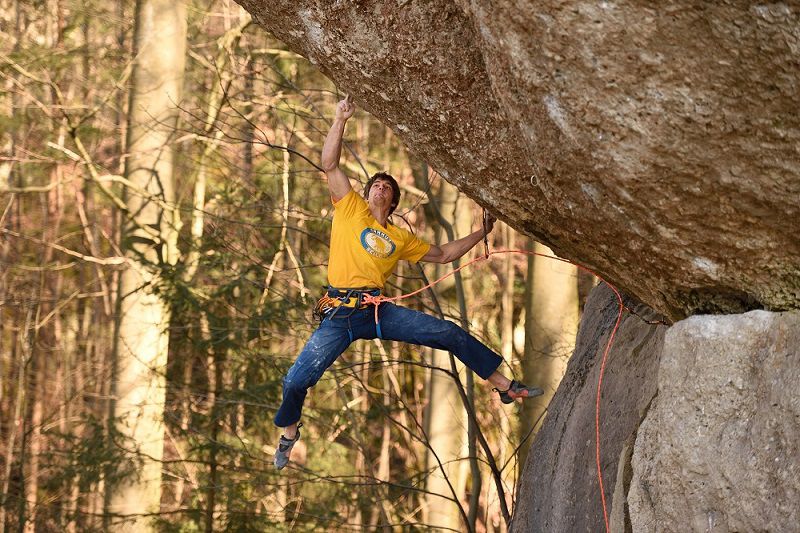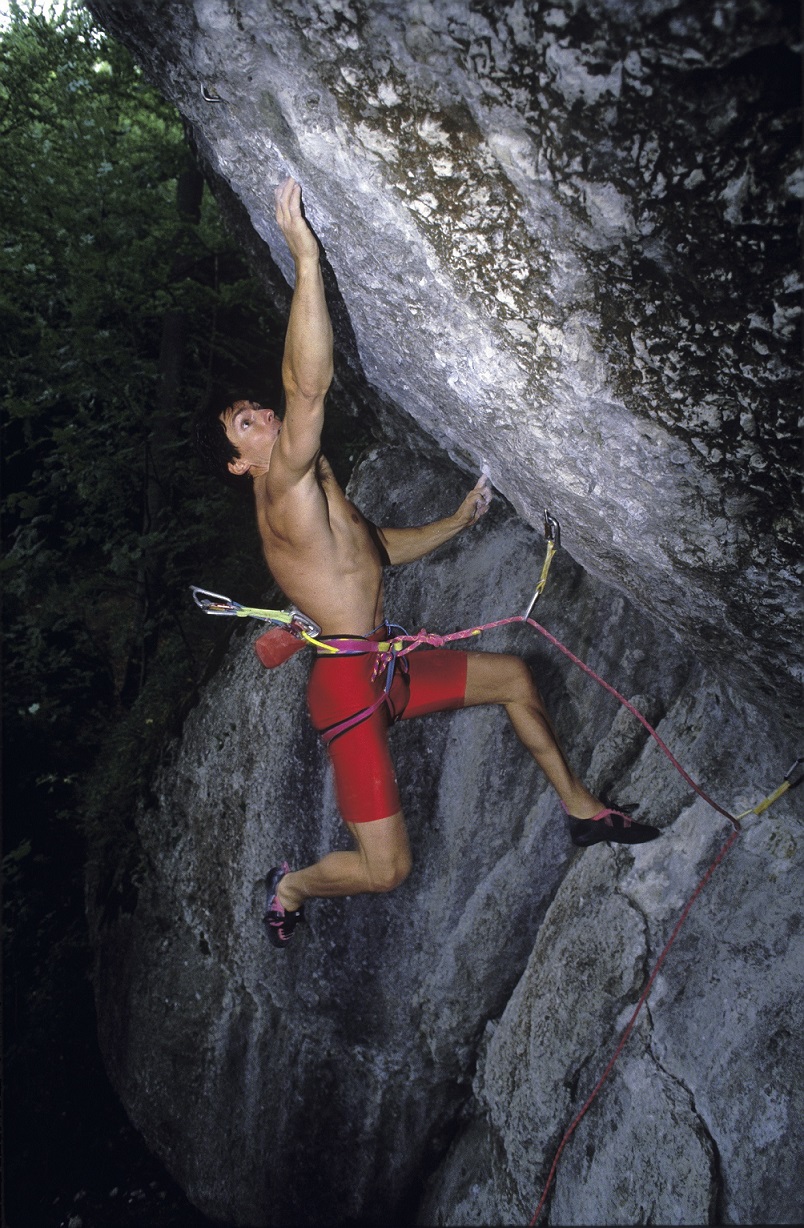Kruder Siblings conquer iconic Verzasca Dam
second edition, attracted 24 of the world's best…

In the late 1980s, on one of his excursions through the Franconian woods, Milan Sykora came across the Waldkopf and spotted a potentially climbable line running over the steep, 40 degree overhanging wall. He placed bolts along the route but soon realized that although the line was climbable - it was much too difficult for him! But this is where his friend came in, Wolfgang Güllich, who was back in a top climbing form. Milan showed him his line and Wolfgang was immediately fascinated. He realized straight away that climbing this route would open up a whole new dimension of difficulty and was simply bursting with motivation.
After eleven days of climbing, split over ten weeks in the summer of 1991, on September 14, Wolfgang finally completed his ascent: twelve extremely tough climbing moves with lots of boulders and a 70-second maximum load on the body - that's "Action Directe"! But how difficult was this route? In 1984, Güllich had climbed the world's first X grade ("Kanal im Rücken"), followed by the first X+ in 1985 ("Punks in the Gym") and the first X- in 1987 ("Wallstreet"). And then "Action Directe" - Wolfgang gave it a suggested grading of XI. And he still seems to be right: it took four years for the first successful repeat climb of "Action Directe", with many of the world's best climbers failing in their attempts to link together the uncompromising moves on this very overhanging wall. For many years, "Action Directe" was regarded as the most difficult climbing route in the world.
Wolfgang Güllich died on August 31, 1992 as a result of injuries sustained in a road accident. The climbing scene lost a fascinating personality who had helped to shape and develop the sport of climbing for more than a decade. His ideas and visions are still pioneering today. In the year Wolfgang Güllich died, Jan Hojer was born. In 2010, the Mammut Pro Team athlete Jan Hojer succeeded in completing the twelfth ascent of the route after nine days. Hojer was 18 years old. This spring, he returned again for the "Reclimbing the Classics" project photo shoot and met photographer Gerd Heidorn, who had taken famous pictures of Güllich himself in the same place many years ago.

How would you describe "Action Directe"? In particular, if you compare it to today's "modern" difficult routes?
"Action Direct" is typical of the climbs in the Frankenjura: very porous, lots of boulders and comparatively short. Unlike most other grade XI routes, the difficulty of the route is distributed over some 15 moves and anyone not used to the pocket climbing in this area will probably have problems with all the one- and two-finger pockets.
Wolfgang graded "Action" as "XI", equating to around 8c+/9a. What do you think about that?
When Wolfgang climbed the route for the first time in 1991, there were no routes at all at this difficulty grading. So this resulted in a lot of speculation over the grading of the route. Finally, XI was agreed upon at the time. Nowadays there are a lot of routes with this difficulty grading, but "Action" is still regarded as a "very solid" 9a!
You climbed the route four years ago when you were 18. What did your repeat climb of "Action" mean for you personally?
For me personally, it was always a dream to climb this route. When I was just 13 years old, I stood under "Action Directe" on the Waldkopf during an attempt on "Slimline" (X-). I used to spend almost all my school vacations in Franconia and at the time "Action" was regarded as the most difficult route in the area, I just had to try to climb it at some point.
According to reports, in the 21 years since the first ascent, "Action" has been climbed just 16 times. How would you explain this?
I think that the low number of ascents can be explained by the special style and the extremely difficult first move, where you have to make a very dynamic jump out of a one-finger pocket.
20 years ago, Frankenjura was one of the absolute "must" areas for any top climber. Today, the preference has shifted more to Spain. What could have caused this?
This could be due to the sometimes moody Franconian weather.
What does the Frankenjura mean to you personally?
My first experiences out on the rocks were in the Frankenjura and I have never spent so much time in any other climbing area. So the Frankenjura will always play a very special role for me.
What significance does Wolfgang Güllich, who curiously died in the year you were born, have for you?
Wolfgang, a man I unfortunately know only from many stories I've heard, was and still is a great inspiration for many climbers. His death was a tragic loss for the whole climbing world.
Source: http://www.quattro-media.net